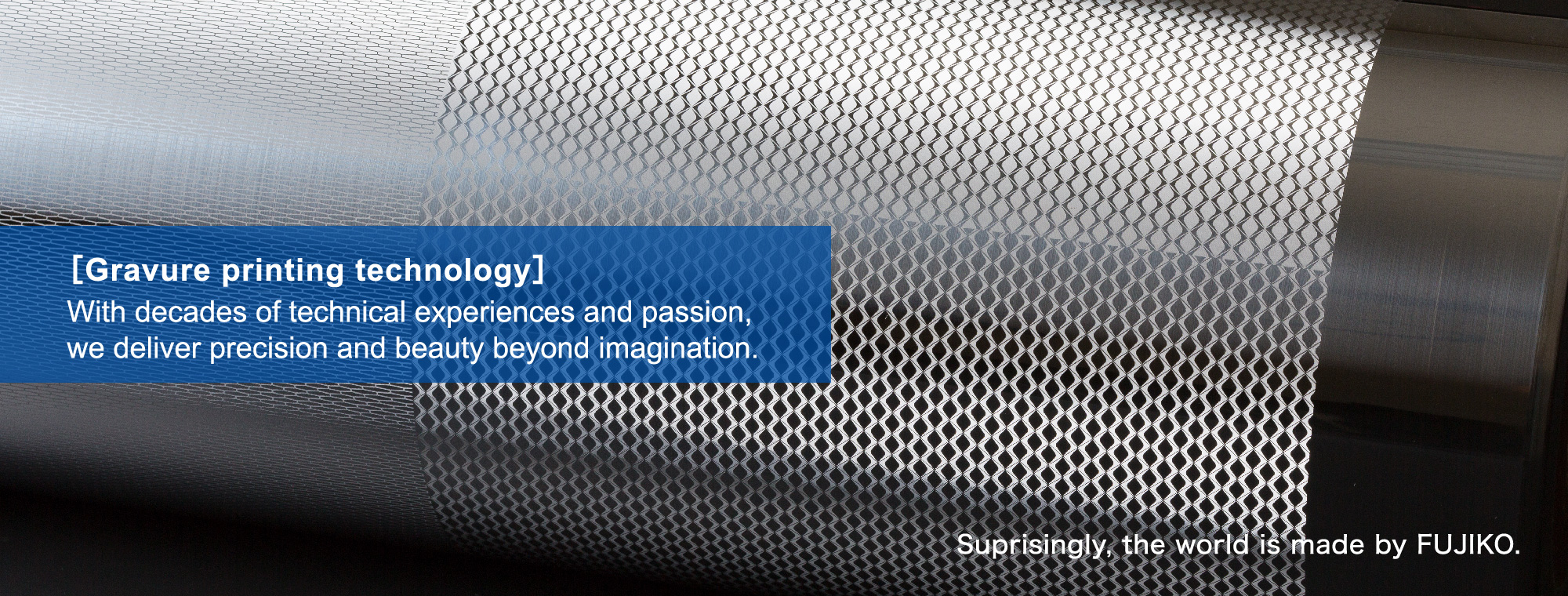Gravure printing is a type of intaglio printing, suitable for printing which requires very fine & detailed shades at high accuracy and quality.Excellent at high-speed printing, it is commonly applied for printing package which requires large volume per production.The word "gravure magazine" nowadays was actually coined in the past when these magazines used to be printed by gravure printing method.
- To simply explain gravure printing mechanism:
-
- Ink enters the cavities called "Cell" on the printing cylinder surface.
- Doctor blade then scrapes off the excess ink, leaving only the ink within the cells.
- The paper or film material where printing requires is clamped between the printing cylinder and pressured roll, and is pressed so as the ink can be transferred from the c 3 ells onto the film (or paper).
- The film (or paper) then goes direclty under drying lamp, where the ink dries.
- Then it moves to the next color unit.
These processes are repeated for the number of times equal to the number of printing colors.
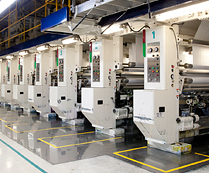
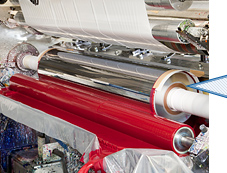

Mutiple colors produced by 4 main colors Blue/Red/Yellow/Black
 Including gravure printing, color printing are commonly produce d by 4 color layers Cyan
(Blue), Magenta (Red), Yellow, and Black.Theoretically, it can be done by "Three primary
colors" Cyan (blue), Magenta (red), Yellow; however, due to the fact combining these
3colors only manages to produce something "Black-like", not complete "Black",black ink
then is added making it 4-colors-print method.Taking the initial letter from these 4 colors
forms the term "CMYK". The method of combining and mixing "CMYK " to reproduce
various colors in print is called "Process printing".E.g. In process printing, most chromatic
colors are reproduced by method in which the darkest color area is formed by applying
100% of 4solid color, while light color tone is recreated by tiny dots.
Including gravure printing, color printing are commonly produce d by 4 color layers Cyan
(Blue), Magenta (Red), Yellow, and Black.Theoretically, it can be done by "Three primary
colors" Cyan (blue), Magenta (red), Yellow; however, due to the fact combining these
3colors only manages to produce something "Black-like", not complete "Black",black ink
then is added making it 4-colors-print method.Taking the initial letter from these 4 colors
forms the term "CMYK". The method of combining and mixing "CMYK " to reproduce
various colors in print is called "Process printing".E.g. In process printing, most chromatic
colors are reproduced by method in which the darkest color area is formed by applying
100% of 4solid color, while light color tone is recreated by tiny dots.

Special color ink to create sharp and vivid colors
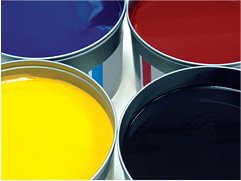 Nevertheless, practically, there are colors that are hard to reproduce by "CMYK" or "P rocess
printing".The spot color method has its limits in reproducing colors that are sharper than what 100%
of 4 solid colors combination can achieve, and also for very light pastel shades.Furthermore, in
"Process printing", colors might become dull due to multiple overlapping of the same degree of dark
color spots, making it hard to achieve clear and bright colors. Especially, vivid colors like orange,
green, purple or pastel pink, lavender are those considered difficult to reproduce.Metallic colors like
gold, silver, etc. and flourescent colors also belong to this category .To produce these colors,
"Special color ink", which is blended first by several color ink s to achieve the intended shade, is
used.
Nevertheless, practically, there are colors that are hard to reproduce by "CMYK" or "P rocess
printing".The spot color method has its limits in reproducing colors that are sharper than what 100%
of 4 solid colors combination can achieve, and also for very light pastel shades.Furthermore, in
"Process printing", colors might become dull due to multiple overlapping of the same degree of dark
color spots, making it hard to achieve clear and bright colors. Especially, vivid colors like orange,
green, purple or pastel pink, lavender are those considered difficult to reproduce.Metallic colors like
gold, silver, etc. and flourescent colors also belong to this category .To produce these colors,
"Special color ink", which is blended first by several color ink s to achieve the intended shade, is
used.
High quality cylinder for high quality printing at high speed
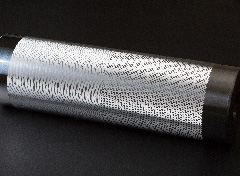 In gravure process printing, the role of cylinder is inevitable.In making cylinder, the steel
core is first cooper-plated. Then the printing pattern is engraved on the surface, which is
later covered in thinly chrome-plated finish to enhance durability. These excellently
durable cylinders endure the rapid, mass production of gravure printing.Regarding the
engraving of cylinders, there are "engraving cylinder" in which the copper-plated surface
are etched directly by engraving needle using machine to form c ells; and "Chemical
corrosion cylinder" in which the cooper-plated surface is pre-treated with resist, and the
cells are formed through chemical corrosion by a special chemic al solution.It is never an
overstatement to say the "making of cylinder" mainly decides the result of gravure printing.
In gravure process printing, the role of cylinder is inevitable.In making cylinder, the steel
core is first cooper-plated. Then the printing pattern is engraved on the surface, which is
later covered in thinly chrome-plated finish to enhance durability. These excellently
durable cylinders endure the rapid, mass production of gravure printing.Regarding the
engraving of cylinders, there are "engraving cylinder" in which the copper-plated surface
are etched directly by engraving needle using machine to form c ells; and "Chemical
corrosion cylinder" in which the cooper-plated surface is pre-treated with resist, and the
cells are formed through chemical corrosion by a special chemic al solution.It is never an
overstatement to say the "making of cylinder" mainly decides the result of gravure printing.
The installation of clean multiple-color printing machine
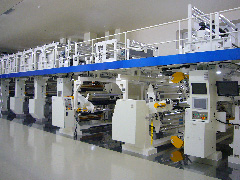 To meet the demand for industrial printing application, in 2016, Manno factory has
installed clean multiple-color printing machine.
To meet the demand for industrial printing application, in 2016, Manno factory has
installed clean multiple-color printing machine.
It enables production for high-end application products which r equire for high
accuracy and high immaculacy.
Supporting soft film and thin film
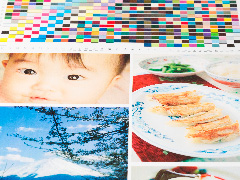 We are known for our specialization in printing & coating thin, soft and stretching
film.We have developed our own techniques in handling traditionally problematic
substrate such as thin polyester film, super ultra-thin polyeste r film, etc. We are
capable of printing full-color for 2μm thick polyester film.
We are known for our specialization in printing & coating thin, soft and stretching
film.We have developed our own techniques in handling traditionally problematic
substrate such as thin polyester film, super ultra-thin polyeste r film, etc. We are
capable of printing full-color for 2μm thick polyester film.
Computer Color Matching (CCM)
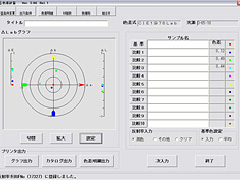 In blending ink, we scan the desired color sample first, and use computer to
calculate the best composition from the colors that have been p re-registered in
our data.With the calculated composition, we produce sample ink in small quality
first; and check the finished color by test-print.In this way, we manage to avoid the
inconsistency in ink blending caused by operator's technique level and intuition.
This shortens the time to reproduce the desired ink and reduces greatly ink
wastage when the blending fails.Since the excess ink will event ually become
industrial disposal waste; this process also helps to reduce th e waste to
environment.
In blending ink, we scan the desired color sample first, and use computer to
calculate the best composition from the colors that have been p re-registered in
our data.With the calculated composition, we produce sample ink in small quality
first; and check the finished color by test-print.In this way, we manage to avoid the
inconsistency in ink blending caused by operator's technique level and intuition.
This shortens the time to reproduce the desired ink and reduces greatly ink
wastage when the blending fails.Since the excess ink will event ually become
industrial disposal waste; this process also helps to reduce th e waste to
environment.
